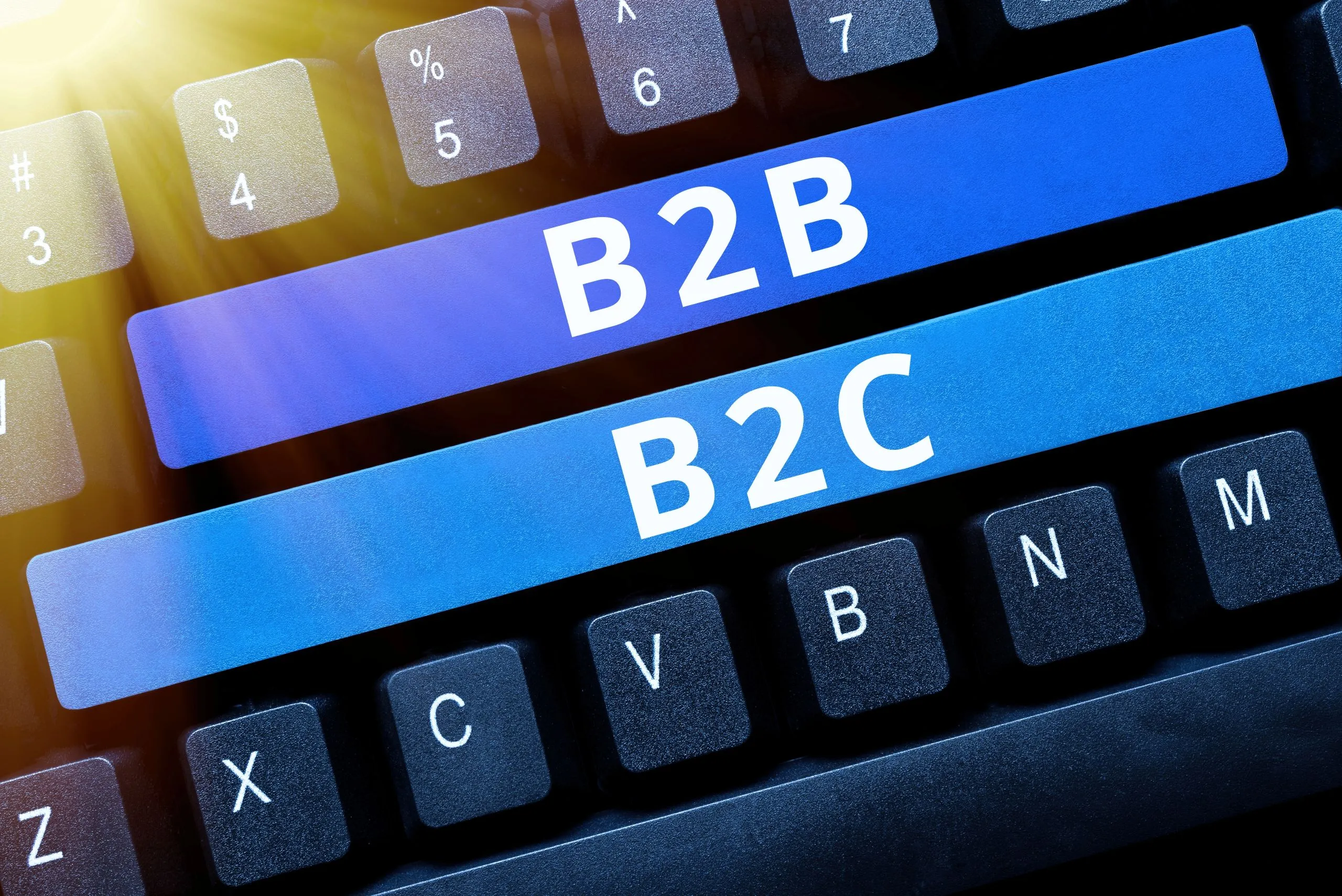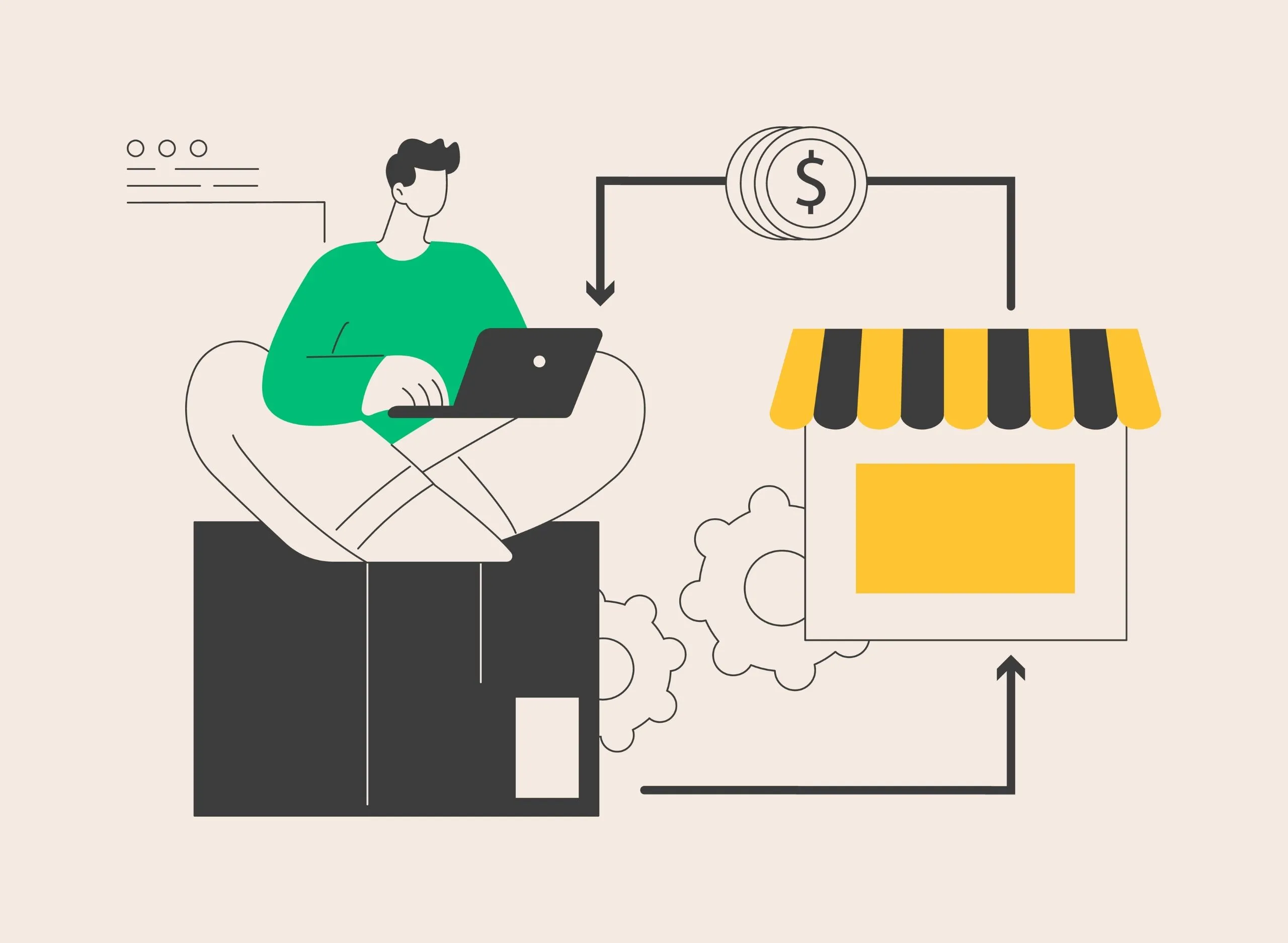As the e-commerce sector grows rapidly, it has become more important than ever for businesses to choose the right business model and develop strategies tailored to their target audience. B2B (Business to Business) and B2C (Business to Consumer) e-commerce models each have their own unique characteristics and requirements. So, what are the differences between B2B and B2C, and which model is more suitable for which situation? In this article, we will explore the key differences between B2B and B2C business models, their advantages, and when each model should be preferred.
B2B and B2C: Basic Definitions
B2B (Business to Business), refers to a trade model in which one business provides products or services to another business. In this model, transactions generally take the form of wholesale sales, long-term business partnerships, and larger-scale agreements. For example, a software company may sell licenses to another software firm, or a supplier may provide raw materials to another company.
B2C (Business to Consumer), is a model in which businesses sell products or services directly to end consumers. The goal here is to create marketing strategies and sales directed at individual consumers, and the sales are usually on a smaller scale. For instance, an e-commerce website may sell clothing or electronic products to individual consumers.
Differences Between B2B and B2C
In the world of e-commerce, businesses need to develop different business models and strategies to reach their target audience. Two common models, B2B (Business to Business) and B2C (Business to Consumer), each stand out with their own characteristics, advantages, and challenges. While B2B is a model where one business provides services to another, B2C refers to sales made directly to the end consumer. These two models require different customer needs, sales processes, and marketing strategies. Let’s take a closer look at the key differences between B2B and B2C:
1. Target Audience and Customer Profile
In the B2B model, the target audience typically consists of businesses or organizations. These types of transactions are usually limited to a specific industry, and buyers make purchases to meet their own business needs. Since the customer profile is more professional and specialized, the sales process is also more complex. Additionally, B2B sales often require a longer-term and more strategic approach.
In the B2C model, on the other hand, the target audience is made up of individual consumers. Here, buyers usually purchase products for personal needs. The customer profile is much broader and more diverse, as you can appeal to all kinds of individual consumers. This requires marketing strategies to be designed in a wider and more general framework.
2. Purchasing Process
In the B2B model, the purchasing process can be much more complex and long-term. Businesses typically go through several stages: identifying the product or service, receiving proposals, negotiating prices, signing contracts, and finalizing the purchase. Many people and departments may be involved in these processes. Additionally, decisions are usually made based on budget, needs, and business strategies.
In B2C sales, the purchasing process is faster and more straightforward. Typically, a consumer researches the product they need, compares options, and easily makes a purchase. Purchasing decisions are based on emotional and individual needs and are often made instantly. Therefore, B2C sales result in faster conversions.
3. Pricing and Sales Volume
In B2B sales, purchases are usually made in large quantities and at higher prices. Prices can be customized based on the product’s features and the specifics of the agreement. Discounts, payment plans, and long-term contracts are also common in B2B transactions.
In the B2C model, prices are generally fixed and at lower levels. Individual consumers expect to pay a set price for a product and typically make low-volume purchases. Sales in this model are usually made at retail prices.
Advantages and Disadvantages of the B2B and B2C Models
B2B (Business to Business) and B2C (Business to Consumer) are the two most common forms of e-commerce transactions, each offering its own unique advantages and challenges. The differences between these models create variations in target audiences, marketing strategies, sales processes, and overall business objectives. While both models can offer significant benefits under certain conditions, they may also come with specific drawbacks. The B2B model’s large sales volumes and long-term collaborations provide businesses with stable revenue, whereas the B2C model’s fast sales cycles and wide consumer base require a more dynamic marketing approach. The advantages and disadvantages of these two models play an important role depending on a business’s goals and market conditions. Let’s now take a closer look at the pros and cons of each model.
Advantages of the B2B Model:
Large Sales Volume: B2B sale often involves selling products in large quantities, which results in higher revenue for the business.
Ongoing Customer Relationships: B2B transactions often turn into long-term partnerships, providing a consistent and predictable income stream.
Less Competition: The B2B market typically has fewer competitors, as buyers are focused on specific industries.
Disadvantages of the B2B Model:
Long Sales Cycles: Purchasing decisions take time and can be complex.
Higher Transaction Costs: Due to more intricate marketing and sales processes, businesses need to allocate more resources.
Advantages of the B2C Model:
Broad Customer Base: B2C appeals to a much wider target audience.
Fast Sales Cycle: Consumers can make purchasing decisions quickly, which boosts conversion rates.
Lower Transaction Costs: Sales are generally simpler and faster, making them potentially more cost-efficient.
Disadvantages of the B2C Model:
Intense Competition: Since many businesses target individual consumers, the market is highly competitive.
Low Customer Loyalty: In B2C, customer loyalty tends to be lower, as consumers are often driven by price and product variety.
Hybrid Models Combining B2B and B2C
In recent years, some businesses have adopted a hybrid approach that combines both B2B and B2C models. This allows them to generate revenue through large-scale sales to businesses while also appealing to individual consumers. For a hybrid model to be successful, the right strategy and management are essential.
Choosing Between B2B and B2C Models
B2B and B2C business models require completely different strategies, and each comes with its own set of advantages and challenges. Choosing the right model is crucial based on your business goals, target audience, and the type of product or service you offer. If you’re selling to other businesses, the opportunities provided by the B2B model may be more suitable. However, if you’re offering products aimed at individual consumers, the fast sales cycle of the B2C model can be advantageous..
Both models offer unique benefits and require the right marketing, sales strategies, and customer relationship management for success.





